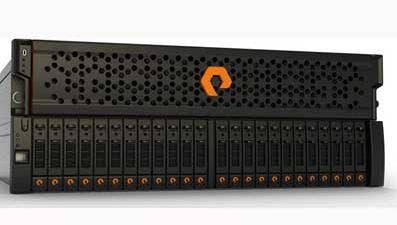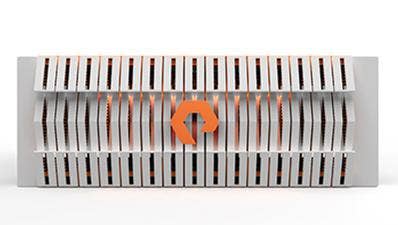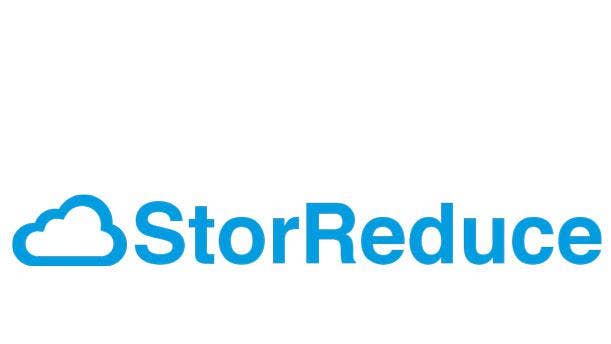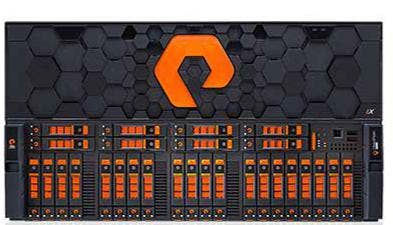Pure Storage CEO Giancarlo On StorReduce Acquisition And Measuring Flash Storage Success

Understanding The Growth Of Pure Storage
Pure Storage is one of the IT industry's fastest-growing storage vendors. The company in mid-August announced second fiscal quarter 2018 year-over-year revenue growth of 37 percent, a rate that will likely propel it into the top five list of storage vendors in the very near future.
Growth rate of 37 percent for all-flash storage -- one might argue that it's pretty good considering that only one other major storage vendor, NetApp, with its 50 percent annualized all-flash storage growth rate, beat Pure Storage. But you won't find Pure Storage CEO Charles Giancarlo agreeing with you.
To Giancarlo, it's important to compare Pure Storage's growth to other vendors' storage sales as a whole, because those vendors are actually replacing older disk-based storage with flash rather than opening new business.
Agree? Disagree? Here’s how Giancarlo lays out his argument.

Looking at Pure Storage's second fiscal quarter 2019 financials, it seems the company is well on the way toward beating its last year revenue, which was its first $1 billion year.
We raised our forecast for the year to $1.365 billion. That's up from $1.345 billion last quarter, and up from $1.335 billion, which was the forecast we gave at the beginning of the year.
Pure Storage reported 37 percent year-over-year growth in revenue for the quarter. That's a slowdown in the revenue growth compared to last year, right?
Quarter by quarter, the growth rates change … because of the different measures from the year-ago quarter. We've been guiding to, I believe, a 33.5 percent growth rate for the year overall. We always seek to beat what we've got. But it's very much in line with an overall 30 percent to 40 percent growth rate, which is what we continue to guide towards.

Last quarter, Pure Storage was No. 1 in terms of flash storage growth, right?
We no longer focus on that as a measurement. I've got to be very, very direct with you because it comes up often. [Growth can be inflated by] currently replacing magnetic [storage] with flash, and the first year into it when they can record hundreds of percent growth in their AFA [all-flash array] simply by replacing their magnetic [storage]. In our case, we're going after the storage market. Period. Disk, flash or tape, we're going after the storage market. And we believe flash will penetrate that.
If you look at our growth rate, 37 percent, that's well above the overall growth rate of the industry. And it's many times more than any of our competitors' total growth rate. We were once a tiny little fraction of any one of our competitors' size. Now we're No. 6 in terms of overall size. We're catching up on No. 5.

One thing I have to double-check on your wording: You said Pure Storage's growth exceeds all your competitors' overall growth. That does not necessarily mean all your competitors' all-flash growth.
Yeah, all of our competitors' overall storage growth.
Because I did notice that NetApp this quarter took the overall growth crown for all-flash storage.
Yeah, but again, if you sort that out, a lot of that is that we're replacing existing magnetic [storage] with flash. [NetApp was] the latest to the game in flash. So their comparables are relatively low. They still are catching up on flash. Whenever you have an installed base that's mostly magnetic, and you start replacing it with flash, it's going to look like high growth rates.

But you have to admit, as a vendor, it would be nice to have that installed magnetic storage base that you could go out and replace and get even higher growth, right?
Well, you know, I've been in a lot of businesses, and the ones that are the best are the ones that have top-line growth. It doesn't matter how much is out there. You can pound your chest at being the biggest at all-flash, but if your overall business is not growing that much, I prefer being in my seat.
How is the move toward NVMe adoption going at Pure Storage?
I think one of our major headlines is the fact that we brought out, if you remember at Pure Accelerate, the X-series, which is all-NVMe. In this past quarter, that is Q2, we shipped over 50 percent of our product revenue as NVMe. This is a huge transition, and a huge adoption of NVMe technology by our customers.

Turning toward Pure Storage's new acquisition, StorReduce is Pure Storage's first acquisition, right?
It's the first one as a public company, correct. Even so, it's the first one of any magnitude. We did a very small one as a private company. … Proton Digital Systems.
What was that?
It literally was a couple of people. For accuracy, I've been corrected. I've been saying [StorReduce is] our first one. But for accuracy, they pull me back and say, it's the first one as a public company.
What technology was it?
We didn’t actually buy technology. We actually just bought a few people that were working at a startup. And the way to get them was to acquire the company.

So what is Pure Storage getting with StorReduce?
It's very exciting. They are a cloud-first software-based company that provides deduplication and data connection and migration to the cloud or to on-prem. The best way to think about it is, we can take unstructured data, deduplicate it, and then record it on either our FlashBlade product, which is an object store, or into Amazon S3 or some other object store. It enables companies to have rapid recovery on-site, but also cold storage off-site.
Is it specific to object storage?
No. It can dedupe any type of file and/or object. But it stores it into an object environment.

Pure Storage already has deduplication technology. Why do you need this new technology?
We do on our FlashArray, which is our block storage product. But we have minimal data reduction on our FlashBlade. And so this is a really great enhancement to our FlashBlade story.
What's the value of the acquisition?
We're not disclosing that. It's a relatively small company. They do have a product. They have several dozen people. But beyond that, we're not disclosing finances.
So StorReduce already had product out in the market?
They did. I think it's important that we're clear with you on this: We're going to support the existing customers. We're not going to add new customers until next year while we, we call it, 'purify" the product. What I mean by that is making sure that it's hardened, has our ease of use integrated, our management system, and we feel confident that we can support the kind of large enterprise-scale customers that we have.

Does that ‘purification’ include making the product available only on the Pure Storage platform?
No, no. It will be available in software. We'll have more detail later in the year. But we're going to make it available as software or as an appliance, and eventually on the platform itself.
Does that include making the technology available to non-Pure Storage customers?
That's possible. Whether we sell it to that environment will be something else. We haven't made a decision about that.

What's the difference between the deduplication technology from StorReduce and other vendors? A few years ago, deduplication was an add-on, with stand-alone vendors, but now it's a checklist item from most storage vendors.
[StorReduce] was designed to be cloud-first. That's a differentiating point. That is to say, it integrates extraordinarily well into the cloud. The way to think about it is, the old way was to dedupe either to tape or to disk in order to be able to do recovery. And this will do it both to FlashBlade for rapid recovery as well as into the cloud for cold storage.
It's a highly scalable architecture, which is also important. It scales very well, small to large. And we believe, based on our testing, that it has very competitive deduplication rates.